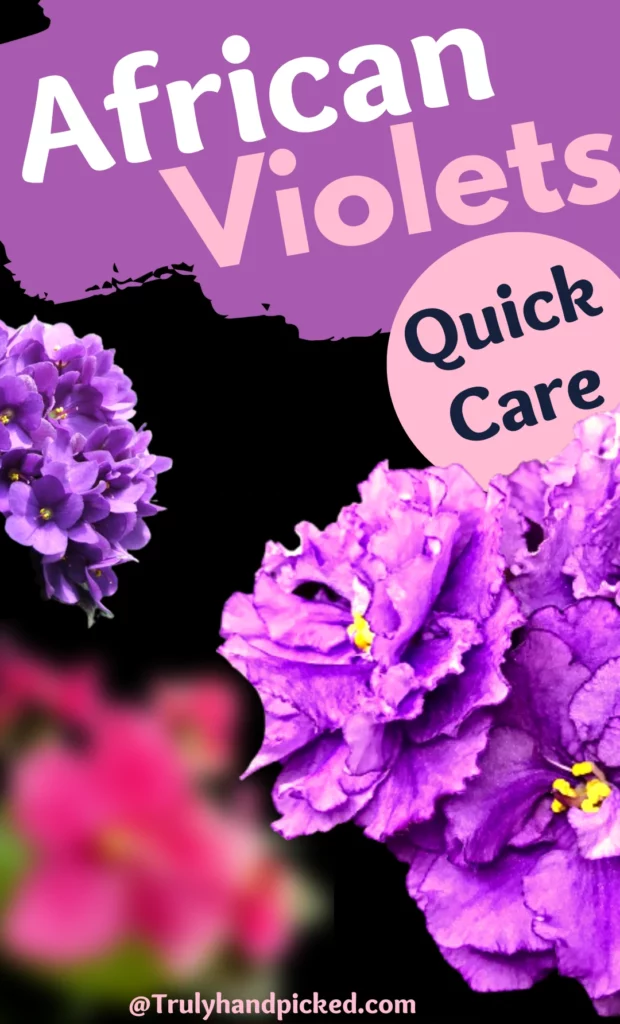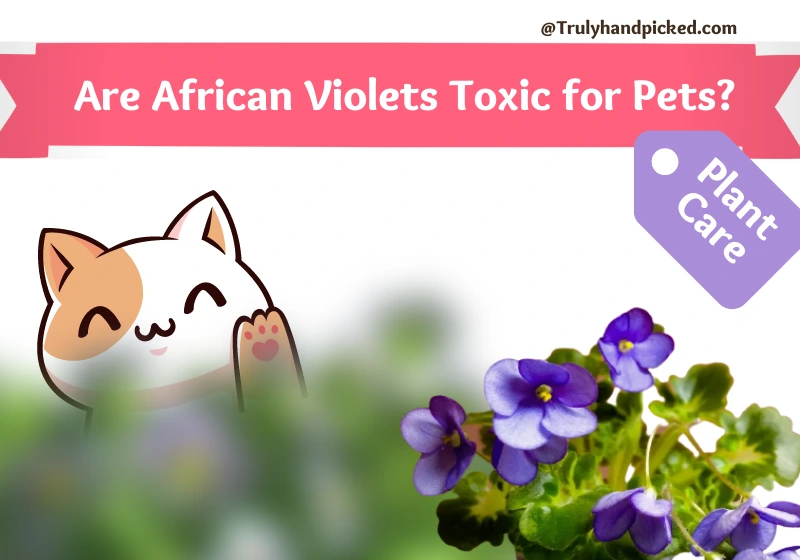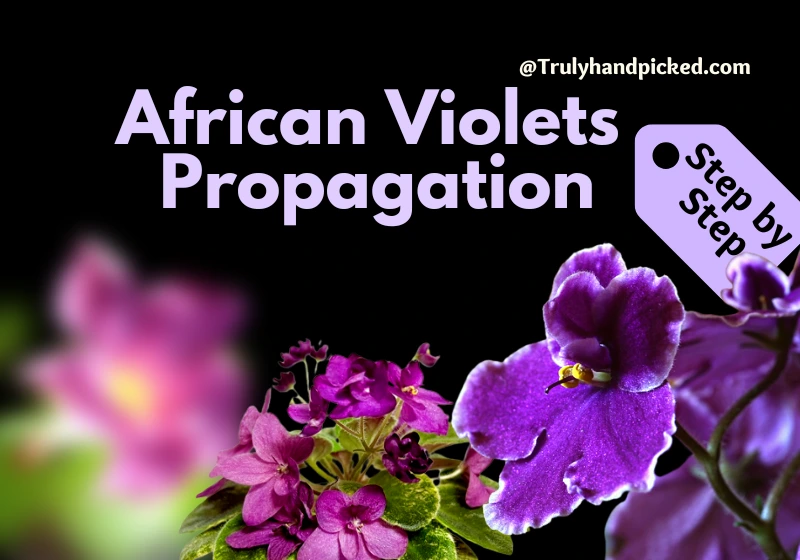African violets are one beautiful houseplant that grows lovely flowers in clusters in different vibrant shades including violet ones.
If you are planning to cultivate flowering houseplants, go for this easy-to-grow without thinking twice. This herbaceous perennial plant can add an exotic tropical essence to your place when fully grown.
Here are some growing tips and must-known facts about a budding African violet plant, you must validate before bringing one to your house-
African Violates Care:
In the end, let’s learn how to provide your growing African violets proper care to give it the best possible thrives innately-
- Plant an African violet in a well-drained potting soil combined with perlite, vermiculite, peat moss, and natural fertilizer
- Maintain the soil pH level between 6.1 to 6.9 to get the best outcome of the planting experience
- Water 1-inch deeply whenever you water your African violet plants and always let the top surface of the soil dry between every watering session
- Place your plant near a window where it can get bright but indirect sunlight throughout the day
- Rotate the plant often and make sure the room temperature stays between 65-75 degrees a day throughout the entire growing session
- Feed a plant with proper fertilizer at 14-12-14 NPK strength every 14-16 days as this is a mild feeder plant
- Repot your plant in a bigger pot, when the roots would come out of the planter, once in 4 months
- Remove the bottom part of plant leaves every 2 months to give its beautiful foliage get enough space to flourish properly.
Make sure you apply some harmless remedies infrequently too, on your plant, whenever you detect any troubleshooting to a growing African violets plant deceptively.
Fertilizer Needs of African Violets & How Often
African violets are a good feeder ad quite particular about the food. Plants require several times fertilization within a year with a balanced suitable fertilizer to bloom well. You can try any mineral-rich balanced all-purpose commercial fertilizer to feed your plant adequately. Apply it in a 14-12-14 NPK ratio. Let’s learn the proper application process through these below-mentioned tips-
- Dilute the chosen fertilizer with distilled water
- Let the water sit uninterruptedly for more than 24 hours if you are using normal tap water
- Go for organic fertilizer to get better blooming benefits
- Fish emulsion, compost tea, bat guano, worm casting, etc. are some great choices in such a matter
- Apply a layer of urea with a mild amount every few whiles to make the soil enough nitrogen-rich to boost the growth
- You can also apply homemade plant food to give your plant adequate nutrient enhancement
- Coffee grounds, apple cider vinegar, kitchen scraps, hydrogen peroxide, etc. are some wonderful homemade fertilization options for nourishing your African violets plant sufficiently.
- Fertilize your plant every once a month
Is African Violets Poisonous to Cats and Dog?
African violets are one of the safest houseplants we can have around. Generally, an African violet plant has no such poisonous part or agents inside that can provide a venomous reaction to any house pet.
But you must check that your loving cat or canine never ingests any part of African violet ever to avoid any kind of unpleasant incident.
Poisonous Signs of African Violets:
If your house pets accidentally gulp any portion from an African violet plant, it will surely get some mild health issues shortly. Some common health problems a cat or dog could get from the ingestion of this mildly toxic plant are-
- Salivation
- Panting
- Vomiting
- Lethargy
- Upset stomach
- And sometimes even diarrhea
How to Deal with It:
- If you find out that your loving pet swallowed one or two leaves from your indoor African violet plant keep an eye on it
- Once you see any kind of above-mentioned sign to your cat or dog, take it to the nearest veterinarian immediately
- Don’t forget to take a leaf or any part from that plant along with some of the potting soil with you
- It will help the veterinarian to find out the exact poisonous percentage more quickly
- If you see the signs are mild, you can apply the treatments all by yourself
- To do so, feed your pet some of the activated charcoal or instigate him or her to vomit naturally
- And finally, try to keep the plant away from the reach of your pet and prevent from happening this mishap again shortly.
How to Propagate African Violates:
Any flowering plant looks amazingly striking while placed in numbers, even in a small indoor garden. There is no exception for African violets as well.
But you must skip purchasing such expensive houseplants more than one or two pieces, and try for the propagating process instead. Here is the clear procedure of this propagation process in step by step method-
Supplies You Will Need:
- A fully grown African violet plant as the host
- Potting soil or any rooting medium
- A sharp cutting object or fully sterilized pruner
- Medium-size plastic planter
- Mixing container
- A ½ cup of rooting hormone
- A plastic-made supporting object for plants
- And a transparent plastic cover
How to Propagate:
- Bring the mixing container and prepare the planting medium first
- Do prepare a good potting mix, combine 2 parts of rich well-drained soil and 1 part of perlite
- Sprinkle some water on the potting mix and let the crumbles blend a bit more smoothly during this step
- Pour the medium into the plastic planter, poke a hole with an object, and then, set the planter aside
- Now, find out a perfect leaf from your host plant to do the propagation process
- Look out for a leaf that grows in the middle of a healthy plant
- It must be the youngest and the biggest one as well
- Cut out the entire leaf along with the below stem and nod with 1- an inch length
- Put the end part of the leaf into the powdered form of rooting hormone and keep it aside for a couple of minutes
- Then, get the nod of the leaf through that hole inside the potting soil and secure the base tightly
- Place plant support behind the leaf to keep it straight and unclasped into the potting medium
- Now, place the planter in a proper spot of the house where it can get 6-7 hours of bright but indirect sunlight consistently
- Cover the entire plant with the transparent plastic cover and give it a mini-greenhouse look
- This process will provide the cutting with the proper growing climate along with the best humidity
- Open the cover once in every while to give the air passage system perfect and let the damp airborne out of the place
- Wait till the top surface of the leaf is grown with an apparent violet hue, that’s when the roots develop from the bottom properly
- It takes almost 40-45 days from the first day of the plantation
- Now you can replace the newly grown African violet plant in a bigger planter to give it the best thrive boost effortlessly.



